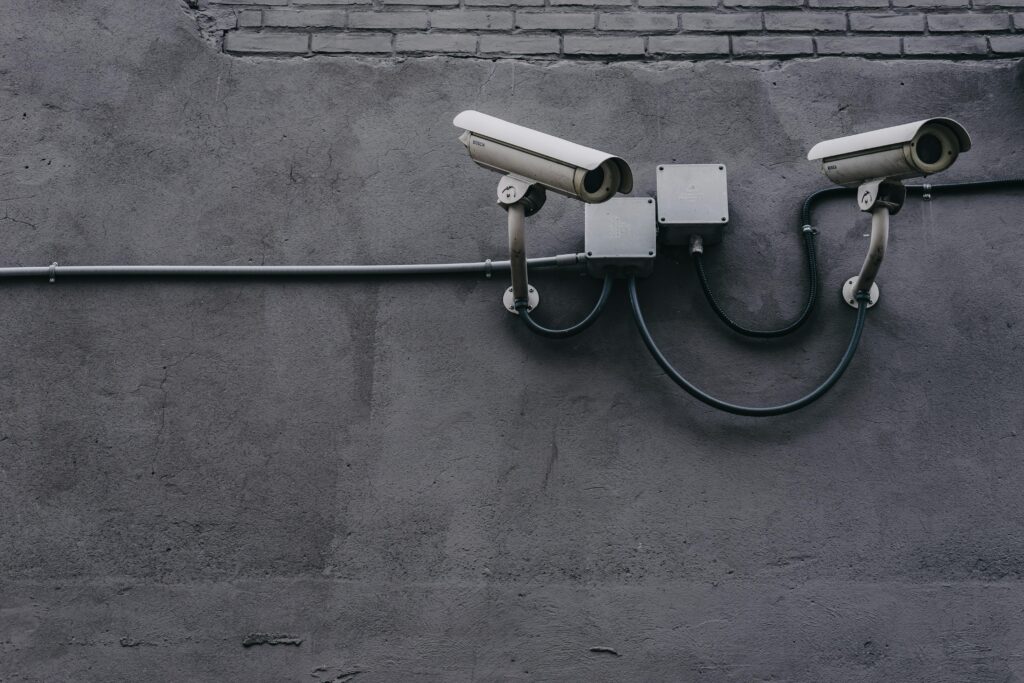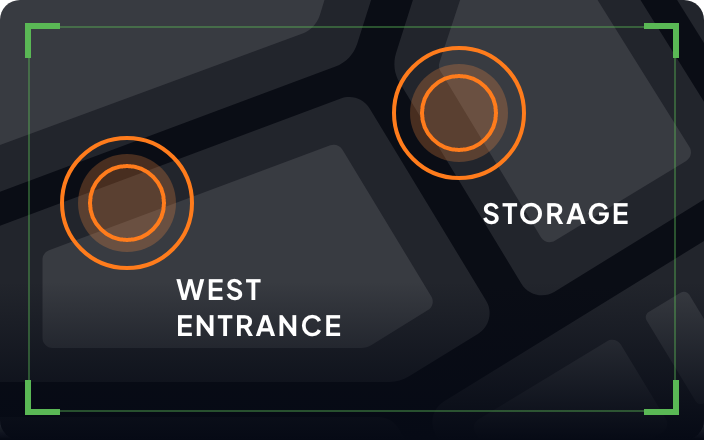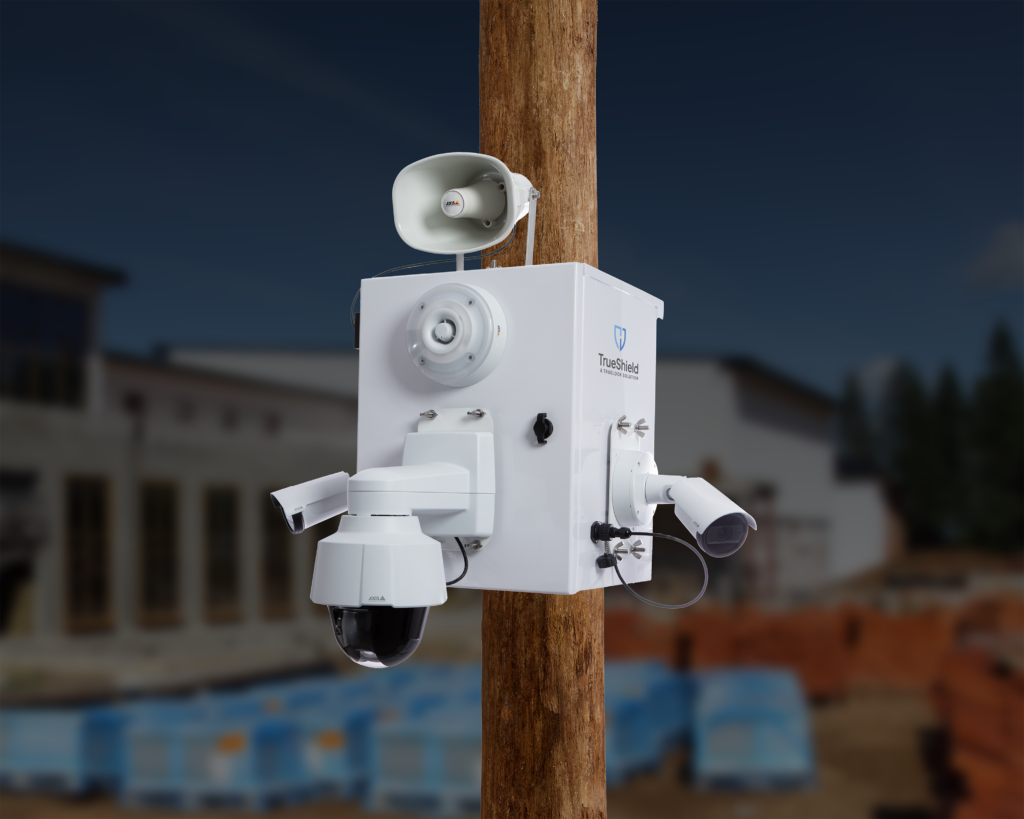In recent decades, advancements in construction technology have revolutionized jobsite management. Emerging technologies like AI, drones, augmented reality, wearables, and automated equipment have helped to mitigate risk, improve efficiency, and create new possibilities for construction.

One area that has seen immense improvement as a result of new technology is jobsite visibility. Thanks to advancements like improved cameras, drones, and AI integrations, construction managers have gained increased visibility into the day-to-day of their jobsites, unlocking valuable insights into how to more safely and more effectively manage their projects.
What is Jobsite Visibility and Why is it Important?
Put simply, jobsite visibility is the ability to see what’s happening at any given time in a given location on a construction site. It’s important because increased visibility is a cornerstone of effective jobsite management. More visibility means more insight into what is happening throughout a project which means more opportunities to improve safety, increase collaboration, encourage accountability, and enhance client confidence.
In this blog, we’re going to explore how jobsite visibility has evolved over the years due to improvements in equipment and advances in construction technology. We’ll also share exciting insights into what the future of jobsite visibility might look like.
Where It Started: The Early Days of Jobsite Visibility
Cameras have always been the foundation of jobsite visibility. They provide project managers with the ability to see what is happening directly on the jobsite without being physically there.

The first cameras to find their way onto construction sites were closed-circuit television (CCTV) cameras. To create and store images, these cameras were hardwired to recording devices. Though they offered limited resolution and flexibility compared to cameras today, they still enabled project managers to record jobsite activities so they could review footage retroactively. The presence of CCTV cameras alone helped boost compliance and accountability while also reducing the risk of theft.
As camera technology evolved over the years, resolution was one of the first things to improve, enabling cleaner more precise images and videos. With these advancements emerged the Pan-Tilt-Zoom (PTZ) Camera which, as its name suggests, enabled zooming features as well as camera movement which could be remotely controlled by project managers so they could gain more comprehensive views of their jobsites.
The early 2000s marked the transition from analog cameras to IP network cameras. The biggest difference between CCTV cameras and IP network cameras is that IP cameras are all digital, meaning they can send signals over cables to be stored in a network rather than on a hardwired recording device. These cameras also offered superior image equality, advanced features, and scalability, making them the preferred choice for modern security systems on the jobsite.
With IP Cameras, integrations with construction management software and BIM became possible. These integrations helped construction project managers make more and faster data-driven decisions and streamline workflows. Integrations with platforms like Procore and Autodesk enabled easy access to camera footage, images, and videos as well as other project data, making it far more efficient to document and review project processes and share photos, videos, and updates with stakeholders.
Jobsite Visibility Today, and Tomorrow
Today, cameras are still an integral part of every successful construction site, boasting higher resolution and new features such as remote live viewing, intelligent jobsite security, time-lapsing, and cloud documentation. But the technology doesn’t stop there. In recent years, jobsite cameras have embraced smart technology and AI integrations. Smart cameras equipped with advanced sensors and AI algorithms can automatically detect and track movement from humans and vehicles, productivity, and equipment usage, ensuring that project managers can stay on top of safety issues, even discovering personal protective equipment (PPE) violations.

The potential applications of AI and machine learning to camera tech are vast and rapidly evolving each year. Enhanced data analysis enabled by AI has unlocked business intelligence for project managers, helping them to mitigate risks and implement better safety measures. For example, smart cameras can analyze photographs and images from jobsites, scan jobsites for hazards, and even correlate images with accident records to provide safety data and risk ratings for projects. They can even schedule safety briefings when an elevated threat is detected and alert project managers and workers to potential safety issues as they arise. While not all jobsites are equipped with smart cameras like these, this technology does exist and is becoming increasingly popular.

As this technology advances, AI integrations will also help to track productivity. Smart cameras will be able to evaluate job progress as well as the location and status of workers and equipment just from images. When things are on track, project managers will receive a notification confirming that the jobsite has enough workers and equipment to stay on schedule. And if things are getting delayed, project managers can receive recommendations where it might be productive to deploy additional labor. This technology will help ensure that projects remain on schedule and on budget, instilling confidence in clients.
Below we’ll discuss three more major advancements in technology that are shaping the current and future landscape of construction project management.
IoT and Builders Risk
Improving jobsite security and safety is a major driver of innovation when it comes to construction tech–and much of the focus of that innovation has been on cameras. Today, thanks to advances in the Internet of Things (IoT), security systems can include multiple cameras interconnected with other tech, such as sensors, strobes, sirens, and two-way audio. These integrations and connections make cameras even more effective at mitigating jobsite risk.
As these technologies have become more common on jobsites, Builder’s Risk Insurance requirements have also evolved to become more comprehensive and strict. Compliance and insurance requirements will continue to change alongside tech advancements as better technology sets new standards for jobsite safety and security. Cameras are and will continue to be an excellent way to manage liability and stay compliant.
In the future, options for connected technology will continue to evolve and become more customizable to address the various needs of specific jobsites as well as specific builder’s risk policy requirements. Rather than have standards across all jobsites, these technological advancements will enable both policy and safety precautions to be tailored to each specific project.
Drones
One new technology that has made its way onto the jobsite in a big way in recent years is the drone. Today, tech-savvy project managers and early adopters are already using drones to improve land surveillance, making it easier to capture aerial images and monitor project progress. As these early adopters know, drones have the potential to revolutionize project management. In fact, some project the drone industry to be worth billions of dollars in the coming years.
Drones will create a new standard of jobsite visibility, enabling better 3D modeling, advanced thermal and multispectral imaging, and safer, more efficient building inspections. Drone-generated 3D models can help construction crews uncover potential construction challenges and identify potential flaws in the design to minimize resource waste. 3D models will also help construction workers and project managers stay on track with the original design blueprint of a project. Not to mention, showing a client a 3D model of what a finished project will look like is a great way to impress them and build their confidence in your team.
Another way that drones can improve jobsite visibility is by providing advanced thermal and multispectral imaging. This type of imaging enables drones to detect infrared radiation before significant problems occur. Infrared and multispectral imaging also can create precise mappings of construction sites, empowering project managers with the data needed for more effective decision-making and project oversight. This also applies to building inspections, which, before drones, were labor-intensive and often dangerous.
Wearable Technology
Wearable technology is another relatively new major innovation that is transforming jobsite visibility today and paving the way to the future of construction and project management. While many people have adopted wearable technology in their personal lives, wearables are only just making their debut on the job site. But those who have adopted wearable technology are already reaping the benefits. At a basic level, wearables can provide all the same benefits that they provide to everyday users in their daily lives, such as health tracking, strain measurement, and improved communication. On the jobsite, wearables can also be used for interior photo mapping.

But these benefits are just the beginning of what wearables can bring to the jobsite. Some innovative ideas that are not far from implementation are smartwatches that can communicate PPE violations, control jobsite access, and alert workers to hazards. With advancements in eyewear technology, tech enthusiasts are exploring the potential of safety glasses enhanced with augmented reality features that would allow for new views of the jobsite while still providing protection. There have even been major advancements in exoskeleton suits that can help support workers in strenuous activities and even increase mobility.
The Future of Jobsite Visibility
The construction industry is rapidly evolving, and the rate of change is likely only going to speed up as advancements in AI, machine learning, and jobsite technology continue to be made. But while the future of jobsite visibility is bright and exciting, holding many new possibilities from augmented reality (AR) eye protection to interactive 3D modeling, the present day of jobsite visibility is already far more advanced than it was even just a decade ago. New hardware and integrations with AI are enabling project managers and construction workers to operate construction sites in safer, more efficient, and even more imaginative ways.
The possibilities unlocked by improving jobsite visibility will continue to be a critical driver of construction tech innovation.
“The technological advancements of today are setting a strong foundation for the future to come.”
For now, features like remote live viewing, intelligent security and safety, and time-lapsing are already unlocking new and exciting possibilities for construction managers, workers, and clients who are looking to run safe, timely, and cost-effective construction projects.
See how you can get real-time visibility on your jobsite today and make sure to stay up to date with product updates and new future releases from TrueLook.


